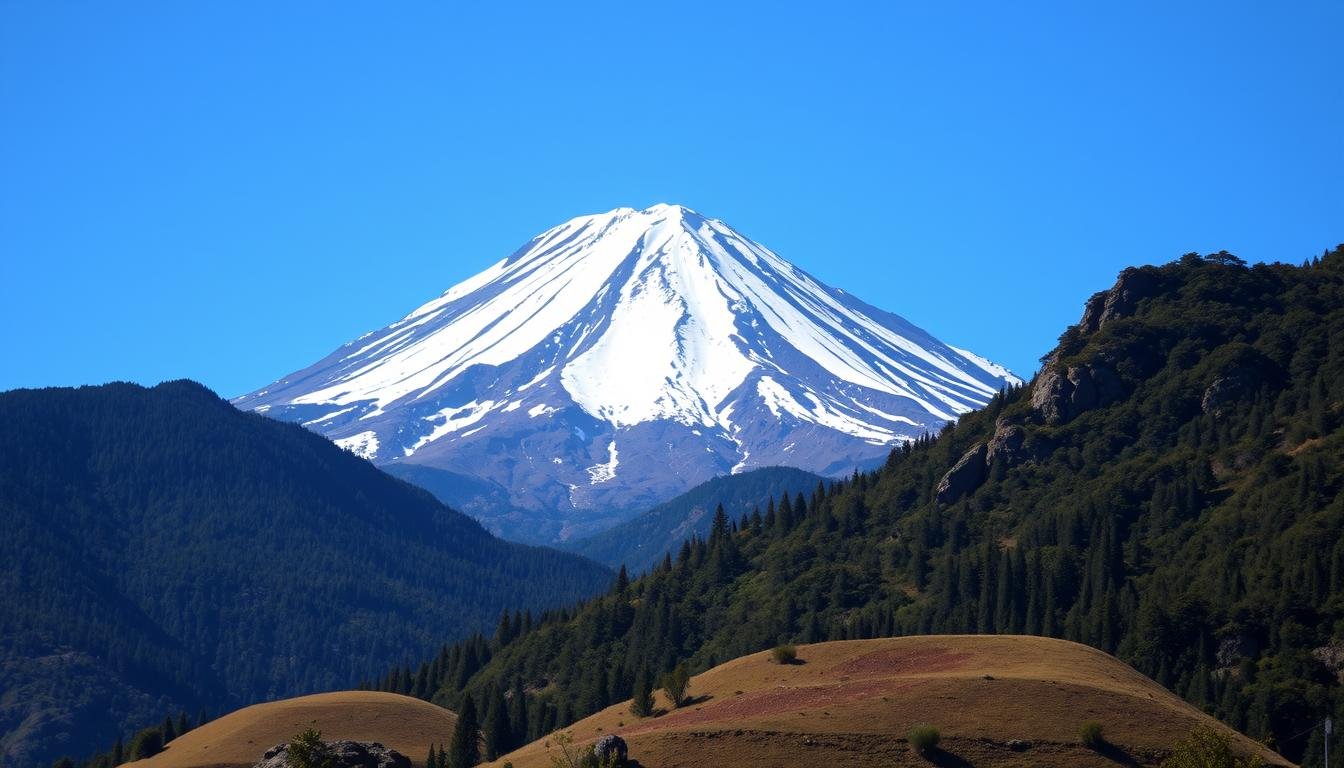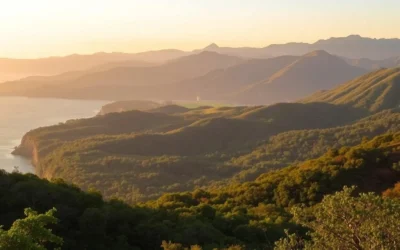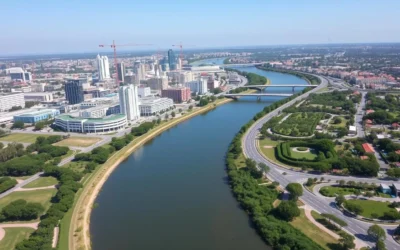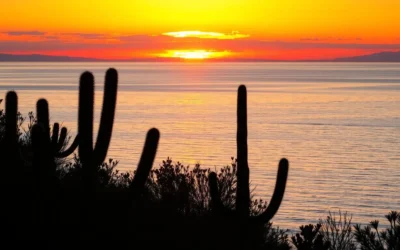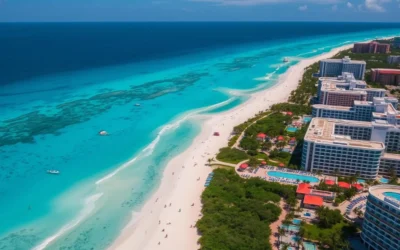✓ Accommodations✓ Flights✓ Rental Cars
Have you ever wondered what it’s like to stand on top of the tallest volcano in North America? This majestic peak offers more than just a challenging climb—it’s a journey filled with breathtaking views, cultural insights, and unforgettable memories.
Planning your trip to this iconic destination requires careful preparation. From acclimatization hikes to navigating the glacier, every step brings you closer to the summit. The experience is as much about the climb as it is about the stunning landscapes and the sense of accomplishment.
Whether you’re an experienced mountaineer or a first-time adventurer, this guide will help you make the most of your journey. Discover the best routes, tips for success, and what to expect along the way.
Key Takeaways
- Prepare thoroughly for the climb with proper acclimatization and gear.
- Enjoy breathtaking views and unique cultural experiences during your trip.
- Plan your journey during the dry season for the best weather conditions.
- Understand the challenges of the glacier and technical routes.
- Take time to explore the surrounding areas for a well-rounded adventure.
Introduction & Overview
Embarking on a journey to one of the world’s most prominent peaks is an adventure like no other. This towering stratovolcano offers a mix of natural beauty, physical challenges, and cultural richness. Whether you’re a seasoned climber or a first-timer, this guide will help you navigate every step of the way.
What to Expect on Your Adventure
Your journey begins with acclimatization, a crucial step for high-altitude success. Spend a few days adjusting to the elevation with shorter hikes. This preparation ensures your body is ready for the climb ahead.
The ascent itself is a mix of technical challenges and stunning views. The glacier section requires focus and proper gear. But the reward is worth it—panoramic vistas that stretch for miles.
Why This Destination is a Must-Visit
This peak’s unique geography makes it irresistible. Its glacial features and prominence set it apart from other climbs. The sense of accomplishment you’ll feel at the summit is unmatched.
Support from experienced guides ensures you’re in good hands. They’ll help you navigate the terrain and manage your time effectively. Even if you’re new to high-altitude climbs, their expertise will boost your confidence.
| Phase | Duration | Key Activities |
|---|---|---|
| Acclimatization | 2-3 days | Short hikes, rest, hydration |
| Ascent | 1 day | Glacier navigation, summit push |
| Descent | 1 day | Return to basecamp, rest |
Planning your trip from a nearby city is straightforward. Arrange transportation and accommodations in advance to ensure a smooth experience. With the right preparation, this adventure will be one you’ll cherish for a lifetime.
Getting Prepared for Your Adventure
Your adventure begins long before you step on the trail, with careful preparation and planning. High-altitude climbs demand more than just enthusiasm—they require the right gear, physical fitness, and mental readiness. This section will guide you through the essentials to ensure a safe and rewarding experience.
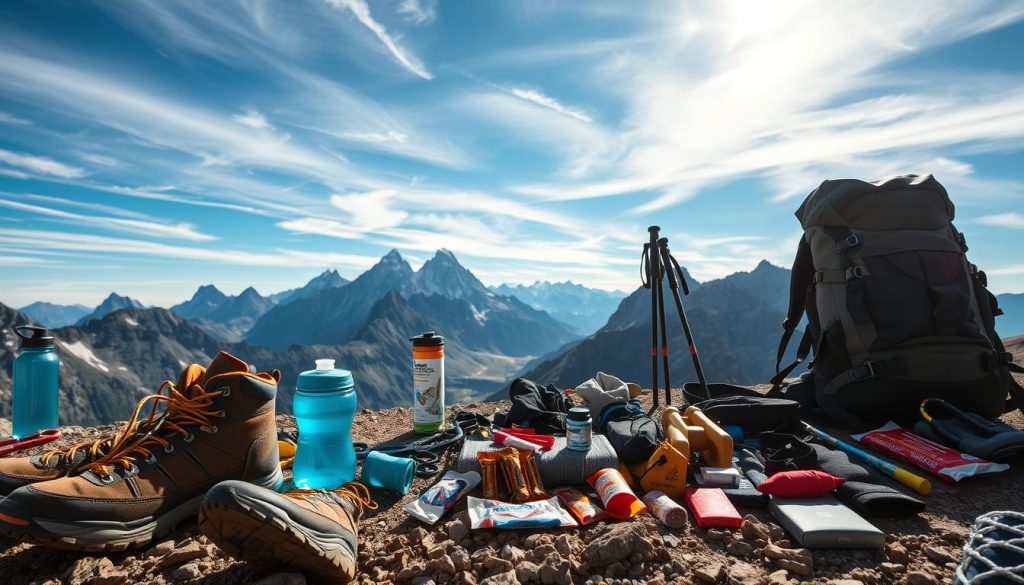
Essential Gear and Clothing Tips
Investing in quality equipment is crucial for tackling the mountain. Start with sturdy footwear like La Sportiva trail runners, designed for technical terrain. Pair them with merino wool socks for warmth and moisture control. Layering is key—opt for moisture-wicking base layers, insulating mid-layers, and a waterproof outer shell.
Don’t forget essential gadgets like the Petzl Altitude headlamp for early morning starts. A reliable backpack, crampons, and an ice axe are non-negotiable for glacier sections. Pack smart—bring lightweight, high-energy food like nuts, dried fruit, and energy bars to keep your energy levels up.
Physical Conditioning and Altitude Preparation
Your physical condition plays a significant role in your success. Begin a fitness routine months in advance, focusing on cardio, strength training, and endurance. Hiking with a weighted backpack is an excellent way to simulate the climb.
Acclimatization is equally important. Spend a few days at higher elevations to let your body adjust. Stay hydrated and avoid alcohol to minimize the risk of altitude sickness. Remember, the better prepared you are, the more enjoyable your experience will be.
Planning Your Trip from Mexico City to the Mountain
Planning your journey from Mexico City to the mountain is easier than you think. With a mix of urban convenience and rural charm, this trip sets the stage for your adventure. Whether you’re arriving by plane or already in the city, this guide will help you navigate the logistics smoothly.
Travel Logistics and Accommodation Options
Start your trip in Mexico City, where you’ll find plenty of hotels to suit your needs. From luxury stays to budget-friendly options, the city offers a range of accommodations. Book in advance to secure the best deals and ensure a stress-free start to your journey.
From there, head to San Miguel Zoapan, a charming village near the mountain. Here, you’ll find cozy lodges that feel like home. These accommodations are perfect for resting before your climb. Many lodges offer meals and local insights, making your stay even more enjoyable.
Transfer Tips and Local Transportation
Getting from Mexico City to San Miguel Zoapan is straightforward. You can hire a car for a private transfer or take a bus for a more budget-friendly option. The drive takes about 3-4 hours, depending on traffic and road conditions.
For local transportation, taxis and minibuses are widely available. These are ideal for short trips around the area. Be sure to negotiate fares in advance to avoid surprises. If you’re traveling in a group, consider renting a car for added flexibility.
| Transport Method | Approx. Time | Cost |
|---|---|---|
| Private Car | 3-4 hours | $100-$150 |
| Bus | 4-5 hours | $10-$20 |
| Taxi/Minibus | Varies | $20-$50 |
Time management is key, especially if you’re catching a bus or dealing with airport delays. Allow extra time for unexpected delays and always have a backup plan. With these tips, your trip from Mexico City to the mountain will be smooth and stress-free.
Pico de Orizaba, Mexico: Best Things to Do – Top Picks
Standing at the summit of this iconic peak offers more than just a physical challenge—it’s a journey of discovery and awe. The breathtaking view from the top is a reward that makes every step worth it. Whether you’re an experienced climber or a first-timer, this guide will help you make the most of your adventure.
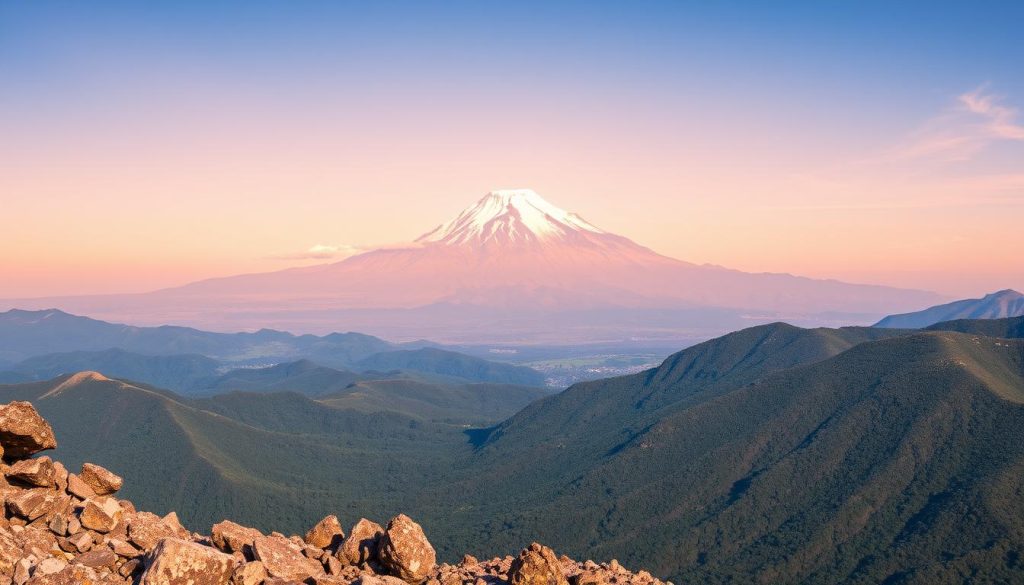
Choosing the right route is crucial for a successful climb. The Jampa Glacier route is popular for its manageable incline, while the Ruta del Sur offers a steeper, more technical challenge. Both paths lead to the same incredible summit, but your choice depends on your experience level and preferences.
Hiring an experienced guide is highly recommended. They not only ensure your safety but also provide valuable insights into the terrain and conditions. With their expertise, you’ll navigate the climb with confidence and focus on enjoying the journey.
Here are some insider tips to maximize your experience:
- Start your ascent early in the morning to avoid afternoon weather changes.
- Pack lightweight, high-energy snacks to keep your energy levels up.
- Take time to acclimatize to the altitude before attempting the climb.
| Route | Difficulty | Duration |
|---|---|---|
| Jampa Glacier | Moderate | 12-15 hours |
| Ruta del Sur | Challenging | 10-12 hours |
The best time to climb is during the dry season, from November to May. This period offers stable weather conditions, increasing your chances of reaching the summit. Plan your trip carefully, and you’ll create memories that last a lifetime.
Climbing Strategies & Acclimatization Techniques
Navigating the challenges of high-altitude climbing requires more than just physical strength. It’s about understanding the terrain, managing your body’s response to elevation, and adapting to changing conditions. With the right strategies, you can make your ascent safer and more enjoyable.
Route Options and Starting Points
Choosing the right route is crucial for a successful climb. Popular paths like the Jampa Glacier route offer a moderate incline, while the Ruta del Sur is more technical. Both lead to the same stunning summit, so your choice depends on your experience and comfort level.
Starting points vary, but most climbers begin at the Piedra Grande Hut. This basecamp provides a good spot to rest and acclimatize before the final push. Plan your route carefully, and consider hiring a guide for added safety and support.
Managing Altitude and Weather Conditions
Altitude sickness can be a major challenge. Spend a few days acclimatizing with shorter hikes to let your body adjust. Stay hydrated and avoid alcohol to minimize risks. Proper preparation ensures you’re ready for the climb ahead.
Weather conditions can change quickly, so always check forecasts before starting your ascent. Early mornings are ideal for climbing, as afternoon storms are common. Be prepared with the right gear, including crampons and an ice axe for navigating icy sections.
Here are some practical tips to keep in mind:
- Use crampons and an ice axe to safely traverse glacier sections.
- Monitor your pace and take breaks to avoid overexertion.
- Stay flexible and adjust your plans if weather conditions worsen.
With these strategies, you’ll be well-prepared to tackle the climb and enjoy the journey to the top.
Detailed Itinerary Insights for Your Climb
A well-planned itinerary is your key to a successful and enjoyable climb. Breaking down your adventure into manageable days ensures you stay focused and prepared. Here’s a detailed look at what to expect each day, from transfers to the final descent.

Day-by-Day Activity Breakdown
Your trip begins with a 5-hour drive from Mexico City to San Miguel Zoapan. Spend the first day acclimatizing at the lodge, located at 3,000 meters. This helps your body adjust to the altitude before the climb.
On the second day, take a short hike to Sierra Negra, reaching 4,580 meters. This prepares you for higher elevations. The third day involves climbing Malinche, at 4,461 meters, to further acclimatize.
The fourth day is dedicated to reaching the base camp at Piedra Grande, situated at 4,200 meters. Here, you’ll rest and prepare for the summit push. Early on the fifth day, begin your ascent, aiming to reach the summit in approximately 7 hours.
Timing and Realistic Expectations
Managing your time effectively is crucial. Start your summit push early in the morning to avoid afternoon weather changes. The total elevation gain during the climb is 1,680 meters, so pace yourself to conserve energy.
Previous climbers recommend spending no more than 14 hours on the mountain to reduce exhaustion risks. With a guide, you’ll navigate the terrain safely and efficiently. Their expertise ensures you stay on track and reach the summit within the planned time.
Here’s a quick overview of the schedule:
- Day 1: Arrival and acclimatization at the lodge.
- Day 2: Hike to Sierra Negra for altitude adjustment.
- Day 3: Climb Malinche to further acclimatize.
- Day 4: Travel to base camp and rest.
- Day 5: Early morning summit push and descent.
By following this itinerary, you’ll maximize your chances of success and enjoy every moment of your adventure.
Navigating Scenic Trails and Iconic Landmarks
Exploring the scenic trails around this region offers a blend of natural beauty and cultural depth. Each path leads you to something extraordinary, from abandoned churches to enchanting river walks. These trails are not just routes—they’re experiences that connect you to the heart of the town.
As you walk, you’ll encounter iconic landmarks that tell stories of the past. Abandoned churches stand as silent witnesses to history, while the river walks offer a peaceful escape. These spots are perfect for capturing memorable photos and reflecting on the view.
Navigating these trails is straightforward, thanks to well-marked paths. Follow the signs, and you’ll find your way easily. Along the route, you’ll notice the natural contrasts—lush greenery against rugged terrain, or the quiet stillness of the river against the bustling energy of the town.
“Every step on these trails feels like a journey through time, where nature and history intertwine.”
Here are some practical tips to make the most of your hike:
- Wear comfortable shoes and bring water for longer walks.
- Take breaks to enjoy the scenery and snap photos of the landmarks.
- Stay on marked paths to ensure safety and respect the environment.
| Landmark | Description | Best Time to Visit |
|---|---|---|
| Abandoned Churches | Historic structures with intricate architecture. | Early morning for soft lighting. |
| River Walks | Peaceful paths along the water’s edge. | Late afternoon for cooler temperatures. |
By following these tips, you’ll experience everything these trails have to offer. Whether you’re a seasoned hiker or a casual walker, the journey is as rewarding as the destination.
Safety and Wilderness Considerations
Safety is your top priority when tackling high-altitude climbs, and understanding wilderness considerations is key to a successful adventure. From unpredictable weather to equipment challenges, being prepared ensures you can enjoy the journey without unnecessary risks.
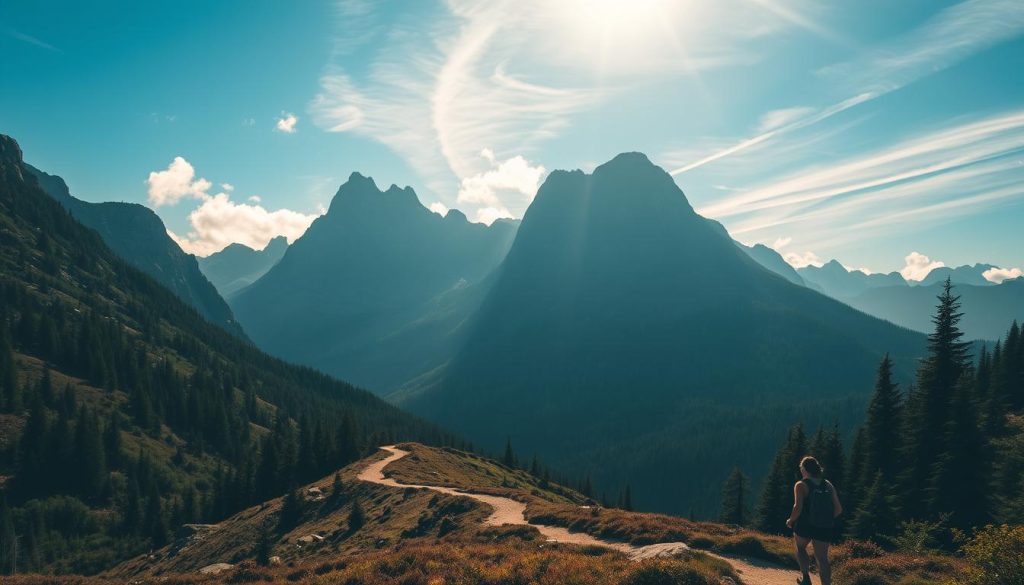
Before you start, double-check your gear. A malfunctioning piece of equipment can turn a manageable condition into a dangerous one. Ensure your crampons, ice axe, and headlamp are in working order. A quick inspection can save you from trouble later.
Dealing with Challenging Conditions and Equipment Issues
Weather in the mountains can change rapidly. One moment it’s clear, and the next, you’re in a snowstorm. Always check forecasts before heading out. If conditions worsen, don’t hesitate to get back to a safer location. Your safety is more important than reaching the summit.
Equipment issues are another common challenge. If something breaks, stay calm. A skilled guide can help you troubleshoot or find an alternative solution. Remember, it’s better to turn around than to push forward with faulty gear.
Here are some tips to stay safe:
- Follow your guide’s instructions—they know the terrain and risks better than anyone.
- Take regular breaks to rest and assess your condition.
- Communicate with your group to ensure everyone is okay.
“In the wilderness, preparation and awareness are your best allies. Always prioritize safety over speed.”
By staying alert and prepared, you’ll navigate challenges with confidence. Remember, every person in your group plays a role in ensuring a safe and enjoyable climb.
Culinary Delights & Restorative Experiences on the Mountain
After a long day of climbing, there’s nothing better than a warm meal to recharge your energy. The mountain offers more than just physical challenges—it’s a place to savor unforgettable culinary moments. From hearty home-cooked meals at lodges to restorative hot drinks at base camps, every bite and sip fuels your adventure.
During the cold nights, a steaming cup of cocoa or herbal tea can be incredibly comforting. These small moments of warmth help you relax and prepare for the next day’s climb. Pairing meals with adequate rest is essential for recovery, ensuring you stay energized and focused.
Sharing food with fellow climbers creates bonds that last long after the adventure ends. Whether it’s a couple enjoying a quiet meal or a group laughing over a shared pot of stew, these moments add a personal touch to your journey. They remind you that climbing is as much about the people as it is about the summit.
“The meals we shared on the mountain were as memorable as the climb itself. They brought us together and kept us going.”
Here are some tips to make the most of your culinary experience:
- Try local dishes to immerse yourself in the culture and enjoy fresh, high-energy food.
- Pack lightweight snacks like nuts and dried fruit for quick energy boosts during the climb.
- Take time to rest after meals, allowing your body to digest and recover.
If you’re planning your trip, consider booking lodges that offer meals. This not only saves time but also ensures you get quality, nutritious food after a long day. Many lodges pride themselves on their home-cooked meals, adding a cultural twist to your adventure.
From hearty breakfasts to cozy nights by the fire, the mountain offers a unique blend of culinary delights and restorative experiences. These moments make your climb even more rewarding, leaving you with memories that last a lifetime.
Capturing Memories: Photography and Drone Tips
Capturing the beauty of high-altitude climbs through photography and drone footage is an unforgettable experience. The stunning landscapes and unique moments deserve to be preserved, but the extreme conditions require careful planning. Here’s how to document your adventure without compromising your equipment or safety.
Start by protecting your gear from the cold. Batteries drain faster in low temperatures, so keep them warm by storing them close to your body. Use a weatherproof case to shield your camera or drone from snow and moisture. Calibration issues can arise in extreme conditions, so test your equipment before the climb.
Timing is everything when it comes to photography. Early mornings often provide the best lighting, with soft hues and dramatic shadows. Expert guides recommend shooting during sunrise or sunset for the most striking images. Don’t forget to capture the journey itself—every step tells a story.
“The photos I took on the climb are my most treasured memories. They remind me of the challenges and the beauty I experienced along the way.”
If you’re using a drone, check local regulations and weather conditions before flying. High winds can make it difficult to control your device, so choose calm moments for the best results. Focus on capturing wide-angle shots of the landscape, as well as close-ups of unique features like the Malinche route.
For a cultural twist, explore nearby Puebla with your camera. The colorful streets and historic architecture offer endless opportunities for creative shots. Along the route, document the small details—like the flora, fauna, and local landmarks—that make your climb unique.
Here are some practical tips to ensure your photography and drone footage stand out:
- Pack extra batteries and memory cards to avoid running out of power or storage.
- Use a tripod or stabilizer for steady shots, especially in windy conditions.
- Take time to frame your shots carefully, focusing on composition and lighting.
By following these tips, you’ll create a visual diary of your climb that you can cherish for years to come. Whether you’re a seasoned photographer or a beginner, the memories you capture will be as rewarding as the journey itself.
Conclusion
Your journey to this iconic peak is more than just a climb—it’s a transformative experience. From the challenging ascent to the rewarding views at the summit, every moment is a testament to your determination and preparation. Thorough planning, safety measures, and expert guidance ensure you make the most of this adventure.
Reflect on the personal milestones you’ve achieved and the breathtaking landscapes you’ve discovered. Whether it’s navigating the glacier or enjoying a warm meal at the base, these memories will stay with you for years. Proper acclimatization and gear are key to overcoming the challenges of high-altitude climbing.
As you plan your trip, remember to book accommodations and transportation in advance. Early starts and flexible timing help you manage long days on the mountain. With the right preparation, this climb becomes a well-rounded adventure that inspires confidence and leaves you with unforgettable stories.
The above is subject to change.
Check back often to TRAVEL.COM for the latest travel tips and deals.
